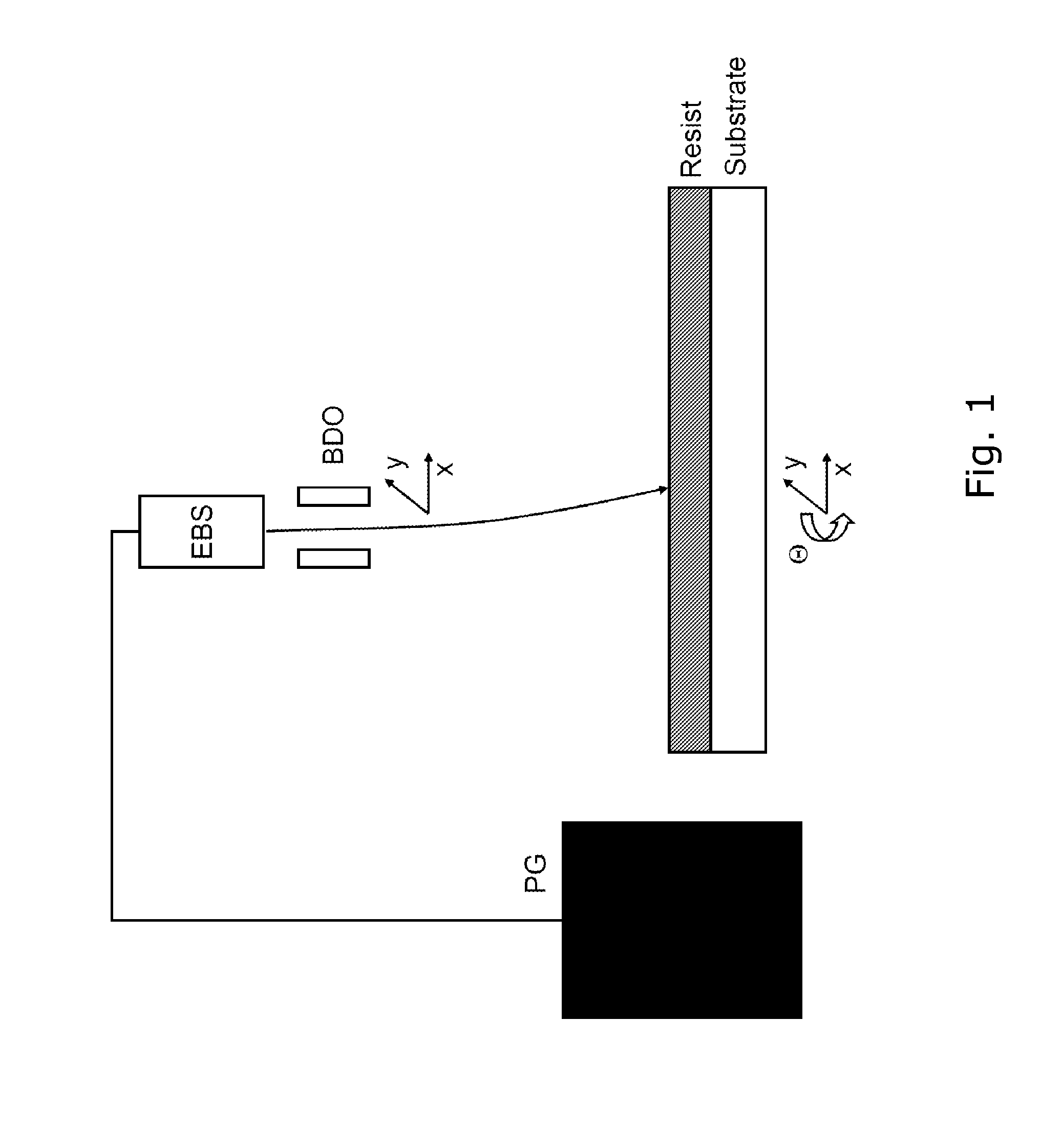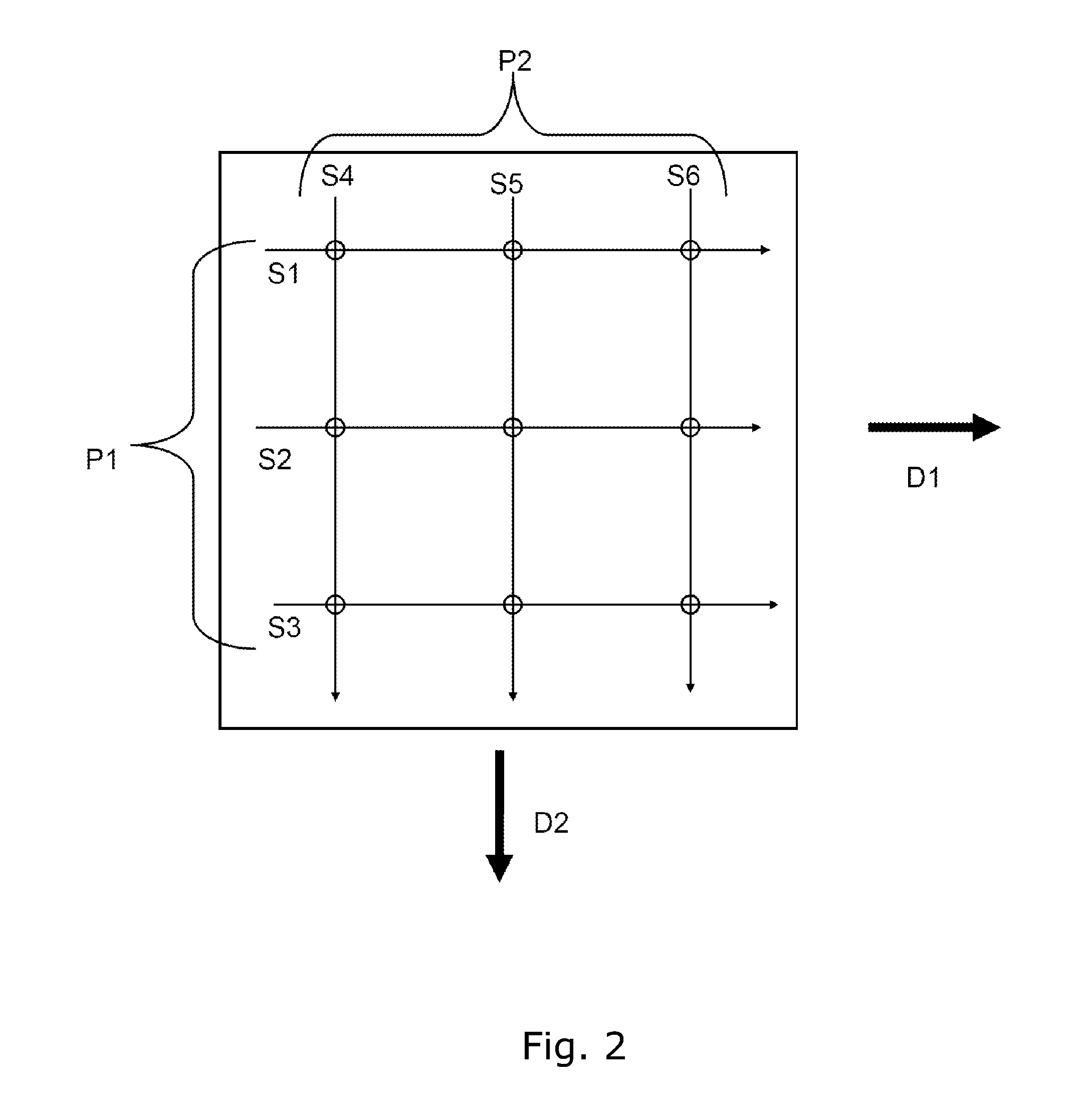Method for performing electron beam lithography
a technology electron beam, which is applied in the field of electron beam lithography, can solve the problems of reducing the necessary exposure time below a certain limit of any given electron beam lithography system, limiting the scanning speed of the lithography system, etc., and achieves the effect of reducing, alleviating or eliminating one, and sufficient tim
- Summary
- Abstract
- Description
- Claims
- Application Information
AI Technical Summary
Benefits of technology
Problems solved by technology
Method used
Image
Examples
Embodiment Construction
[0052]FIG. 1 is a schematic drawing of an electron beam source over a substrate with an energy sensitive resist.
Annotations used in FIG. 1:
PG: Pattern Generator
[0053]EBS: Electron beam source
BDO: Beam deflection optics
[0054]The electron beam moves relative to the substrate, either by moving the beam, moving the substrate or both simultaneously.
[0055]In order to perform electron beam lithography (EBL), there is provided a substrate with an energy sensitive resist with a threshold dose / energy, also known as clearing dose, saturation dose / energy, on a surface of the substrate.
[0056]Additionally, an electron beam source (EBS) with beam deflecting optics (BDO) is provided so that the EBS is capable of emitting an electron beam towards the energy sensitive resist, preferably with a nano-meter scale precision.
[0057]Next, there is performed a relative displacement of the electron beam across the substrate a first plurality of times so as to form a first pattern (P1) on the substrate, the fi...
PUM
 Login to View More
Login to View More Abstract
Description
Claims
Application Information
 Login to View More
Login to View More - R&D
- Intellectual Property
- Life Sciences
- Materials
- Tech Scout
- Unparalleled Data Quality
- Higher Quality Content
- 60% Fewer Hallucinations
Browse by: Latest US Patents, China's latest patents, Technical Efficacy Thesaurus, Application Domain, Technology Topic, Popular Technical Reports.
© 2025 PatSnap. All rights reserved.Legal|Privacy policy|Modern Slavery Act Transparency Statement|Sitemap|About US| Contact US: help@patsnap.com



